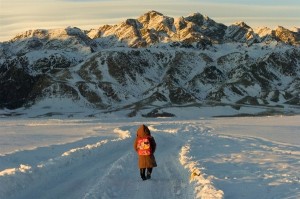East Asia-Pacific Children Highly Vulnerable to Climate Change Impacts Region’s children say they are already feeling the effect of climate change
2011-11-14

BANGKOK/ HONG KONG, 14 November 2011 – According to a UNICEF report, Children’s Vulnerabilities to Climate Change and Disaster Impacts in East Asia and the Pacific, children will be among those most affected by climate change. Millions of children across East Asia and the Pacific already suffer from a lack of access to clean water and proper sanitation, and are vulnerable to food shocks and risks of disease. Climate change is expected to worsen this situation.
The leading killers of children worldwide are highly sensitive to climate change. Higher temperatures have been linked to increased rates of malnutrition, cholera, diarrhoeal disease and vector-borne diseases like dengue and malaria, while children’s underdeveloped immune systems put them at far greater risk of contracting these diseases and succumbing to their complications.
The UNICEF report released today presents an analysis of the climate change trends and potential impacts on children in East Asia and the Pacific, drawing on findings from five UNICEF-commissioned country studies in Indonesia, Kiribati, Mongolia, the Philippines and Vanuatu, as well as children’s own perspectives on climate change and other research. This research was supported by Reed Elsevier, which works in partnership with the global science and health communities to publish more than 2,000 journals, includingThe Lancet and New Scientist.
“The findings in this report remind us of the connection between climate change and the other challenges confronting children,” said Anupama Rao Singh, UNICEF Regional Director for East Asia and the Pacific. “They also remind us that children’s experiences, and the risks they face in terms of their health, education and development, are unique.”
While the report suggests that the impacts of climate change vary from country to country, children in all countries were aware that changes in their environment were already present.
 |
 |
 |
 |
In a region where one in every four children is already stunted due to poor nutrition, the report suggests that more frequent disasters such as flooding, cyclones and droughts could have a long-term negative impact on agricultural production leading to higher food prices and a corresponding increase in malnutrition rates.
Agriculture, vulnerable to changes in temperature, precipitation and water salinity, encompasses more than 50 per cent of livelihoods in the Asia-Pacific region, and a significant portion of GDP for a majority of countries.

Children in Indonesia, Mongolia and the Pacific reported that climate change has affected their families’ livelihoods and in some cases it has caused parents to take them out of school to help collect water and fuel and supplement household income.
“Engaging children in adaptation and disaster reduction strategies will be critical to future success. Children have unique perspectives on their environment, which makes them a vital player in improving community capacity to address climate change risks,” said Rao Singh.
Evidence demonstrates that when children are educated, informed and involved, they share this information with others in their communities and are better able to prepare and protect themselves.
“The impacts of climate change on the lives and well-being of children are real and the policies and decisions made today will set the tone for years to come,” said Rao Singh. “Now is the time to put in place adaptation strategies that ensure that the risks specific to children are addressed. By doing this, we will go some way in helping to build a climate-resilient world for children.”









